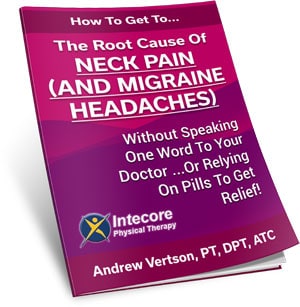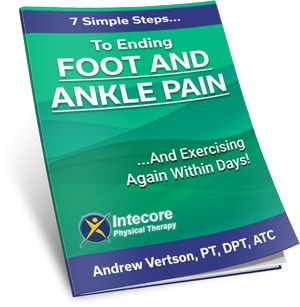
You’ve been doing lower back stretches diligently, hoping to ease that nagging lower back pain, but nothing seems to change. Sound familiar? You’re not alone.
While stretching is often the first thing people try for back pain, it doesn’t always deliver the relief they expect. The truth is, lower back pain isn’t always caused by what’s happening in your back—it’s often more complex than that.
Let’s dive into the three main reasons why your stretches might not be working and what you can do to actually feel better.
More Posts Like This By Intecore Physical Therapy:
Protect Your Back! 5 Guidelines for Exercising with Pain
5 Surprising Ways Holiday Eating Habits Impact Your Back Pain
What Does a Herniated Disc Feel Like? 5 Signs You Shouldn’t Ignore
Table of Contents
Reason 1: You’re Targeting the Wrong Muscles
One of the most common mistakes with lower back pain is focusing solely on the back itself. It’s easy to assume that stretching your lower back will solve the problem, but often, the pain originates from tightness or imbalances in surrounding muscles—like the hamstrings, glutes, or hip flexors.
When these muscles are tight, they can pull on the lower back, creating tension and discomfort. Stretching the back alone won’t fix the root cause of the pain, and you might feel like you’re spinning your wheels.
Reason 2: You’re Overstretching or Using Incorrect Technique
When your back hurts, it’s tempting to push hard on stretches to find quick relief. But overstretching or using poor form can do more harm than good. Instead of easing the tension, you might be straining the muscles further, leading to increased discomfort or even new issues.
Stretching is meant to be gentle and controlled—not something you power through. Poor posture during stretches, like rounding your back or bouncing into a position, can also make the problem worse.
Instead, move slowly and focus on your form. If you’re doing a seated forward fold, hinge at your hips instead of rounding your back.
Avoid pushing through pain. A stretch should feel like a gentle pull, not sharp or intense discomfort.
Stick to a consistent routine. Stretching occasionally won’t make a lasting difference; aim for daily or every other day for gradual improvement.
By focusing on proper technique, you’ll help your body heal rather than exacerbate the problem.
Reason 3: Stretching Alone Isn’t Enough
Here’s the thing: stretching is just one piece of the puzzle. While it’s great for improving flexibility and relieving tension, it doesn’t address the underlying issues that often cause lower back pain, like weak core muscles, poor posture, or limited mobility.
For lasting relief, you need a well-rounded approach that combines stretching with strengthening exercises and mobility work. Without strengthening the muscles that support your spine—like your core, glutes, and hip stabilizers—you’re likely to experience recurring pain no matter how much you stretch.
The Bigger Picture: Why Physical Therapy Can Help
If your lower back pain isn’t improving, it might be time to get help.
We can assess your movement patterns, identify the root cause of your pain, and create a customized plan for your body.
To get relief from back pain, call: 949-597-2103 or fill out our quick form and tell us what’s going on. Click here to fill out the form.
If you’re not ready to speak on the phone, we get it! That’s why we have created this FREE back pain tips report, click here to download it.

- 7 Ways to Get Rid of Tension Headaches Naturally - July 1, 2025
- Why Are My Feet Swollen? Common Causes Explained - June 2, 2025
- What Is Restless Leg Syndrome? Symptoms, Causes, and Relief Options - May 5, 2025












